Breast reduction, while being a transformative surgery for many, leaves scars that can concern patients. Understanding these scars, their nature, duration, and the potential ways to manage them is crucial for those considering or having undergone the procedure.
What is a Breast Reduction Surgery?
Breast reduction surgery or gynecomastia is a procedure undertaken to reduce the size of large breasts. It aims to relieve physical discomfort and achieve a more proportionate body silhouette.
Why Do Scars Form After Breast Reduction?
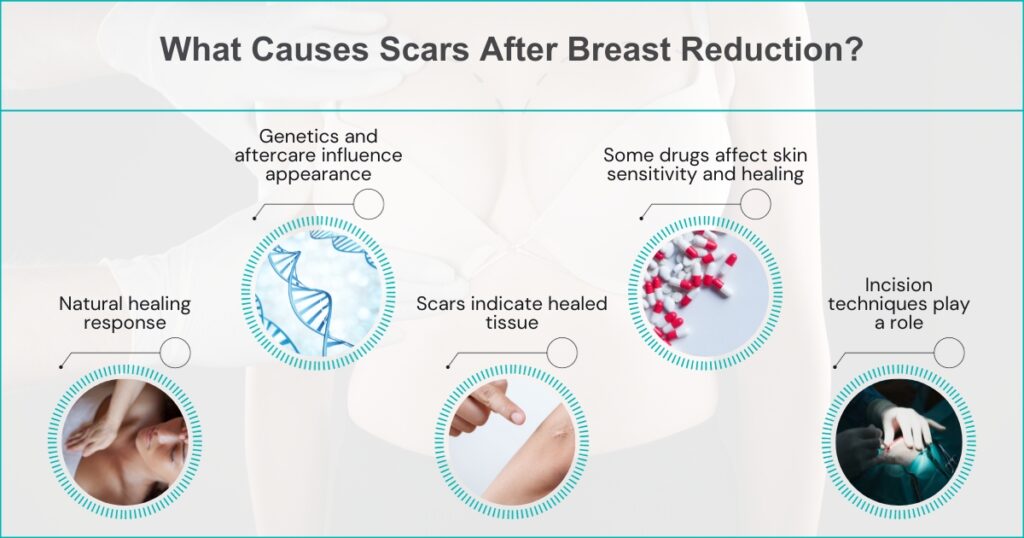
Post-breast reduction surgery, scars form as a natural healing response when the skin undergoes incisions.
- Result of the body’s repair mechanism.
- Appearance is influenced by genetics and aftercare.
- Scars signal matured, healed tissue.
- Certain drugs cause gynecomastia, and it can affect skin sensitivity and healing.
- Incision techniques can also determine scar formation.
How Long Do Breast Reduction Scars Last?
Breast reduction scars, while permanent, fade over time, becoming less visible.
Book A Consultation With Dr Tarek Bayazid
Top-rated Plastic Surgeon For Breast Reduction in Dubai
- Most prominent during the initial months.
- It can take a year or more to fade significantly.
- Scar maturation varies individually.
- The recovery process for gynecomastia surgery can offer insights into healing duration.
- Sun protection aids in faster fading.
Are There Different Types of Scars from Breast Reduction?
Breast reduction surgery can result in various scar types, contingent on surgical techniques and individual healing. But remember, men’s breast removal surgery might have specific scar patterns.
- Anchor scars: Located around the areola, extending vertically and then horizontally in the crease.
- Vertical scars: Descend directly from the areola to the breast crease.
- Periareolar scars: Encircle the areola’s edge.
How Can I Minimise the Appearance of Scars?
Minimising scar appearance post-surgery involves consistent care and certain treatments.
- Application of prescribed ointments or creams.
- Protecting scars from ultraviolet rays.
- Gentle massaging can improve scar texture.
- Gynecomastia natural remedies may offer additional scar care tips.
- Seeking professional treatments if scars are prominent.
Is There a Way to Prevent Scarring After Surgery?
While it’s impossible to avoid scarring entirely, one can take steps to reduce their prominence.
- Following post-surgery guidelines diligently.
- Avoiding strain on the surgical area.
- Ensuring cleanliness to avert infections.
- Optimal hydration for skin elasticity.
Do Scars Fade Over Time?
Scars from breast reduction fade over time, becoming subtler.
- Initial redness and thickness decrease gradually.
- UV protection accelerates fading.
- Individual genetics play a role in scar maturation.
- Proper hydration and skincare routines can aid the process.
What’s the Difference Between Keloid and Hypertrophic Scars?
Both keloid and hypertrophic are raised scars from surgeries but differ in nature. Knowing if one has gynecomastia can help in preparing for potential scar outcomes.
| Feature | Keloid Scar | Hypertrophic Scar |
| Nature of Growth | Extends beyond the original injury site. | Remains confined to the original wound area. |
| Appearance | Often large, bulbous, and irregularly shaped. | Raised but remains within the boundary of the initial injury. |
| Treatment Difficulty | Typically more challenging to treat due to aggressive growth. | Generally easier to treat compared to keloids. |
Can Scar Creams or Ointments Help?
Scar creams and ointments are often recommended post-surgery to aid healing and reduce scar prominence.
- Ingredients like vitamin E and silicone can be beneficial.
- Consistency in application yields better results.
- Sunscreen application reduces hyperpigmentation.
- It’s vital to consult the surgeon before starting any topical treatment.
How Does Massaging Affect Scar Healing?
Massaging scars post-surgery can have multiple benefits for healing and appearance.
- Promotes blood flow to the scar tissue.
- Softens and flattens raised scars.
- It prevents scar tissue from becoming rigid and tight.
- Techniques and timing are crucial for effectiveness.
- Understanding common signs can help determine optimal massage routines for conditions like gynecomastia.
Are There Treatments Available for Reducing Scars?
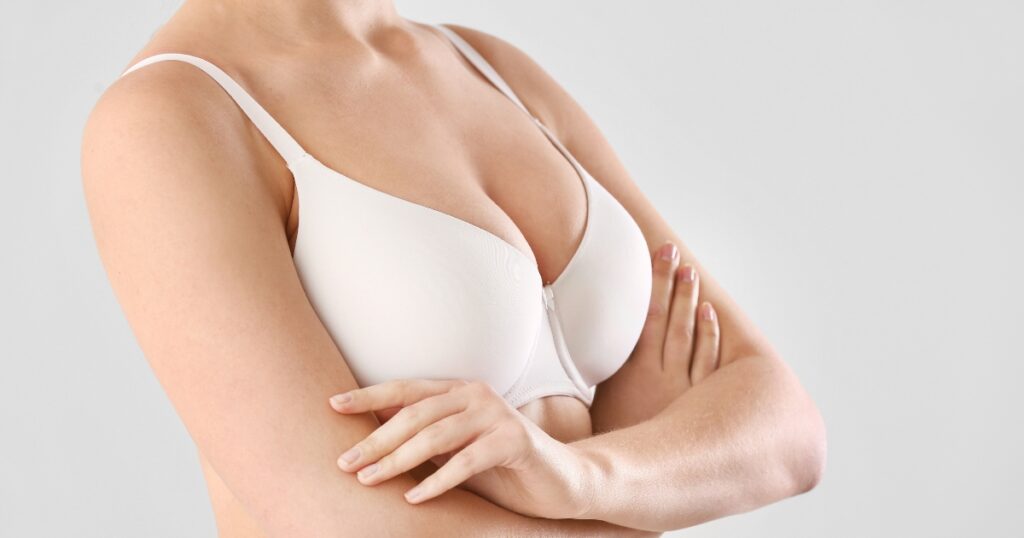
Several professional treatments are available for those seeking to reduce or alter the appearance of post-operative scars. Gynecomastia exercise routines can also promote skin elasticity and faster healing.
- Laser treatments.
- Microdermabrasion.
- Steroid injections.
- Silicone gel sheeting.
Do All Patients Experience the Same Level of Scarring?
What causes gyno or gynecomastia can offer insights into potential scar outcomes for specific conditions. The level and appearance of scarring vary among individuals, influenced by multiple factors.
- Genetics plays a considerable role.
- Skin type and age are influential factors.
- The surgical technique used can determine scar type.
- Overall, health and nutrition play a role.
What Factors Influence Scar Healing After Breast Reduction?
Several elements can influence the healing process of scars after a breast reduction.
- The individual’s age: Younger people might heal differently.
- Skin type: Oily or dry skin can have different healing timelines.
- Aftercare: Following guidelines ensures better healing.
- Hormone treatments for gynecomastia: It might alter scar healing for those undergoing the procedure.
- Nutritional intake and overall health can also play a role.
Is It Normal to Feel Pain or Discomfort Around the Scar Area?
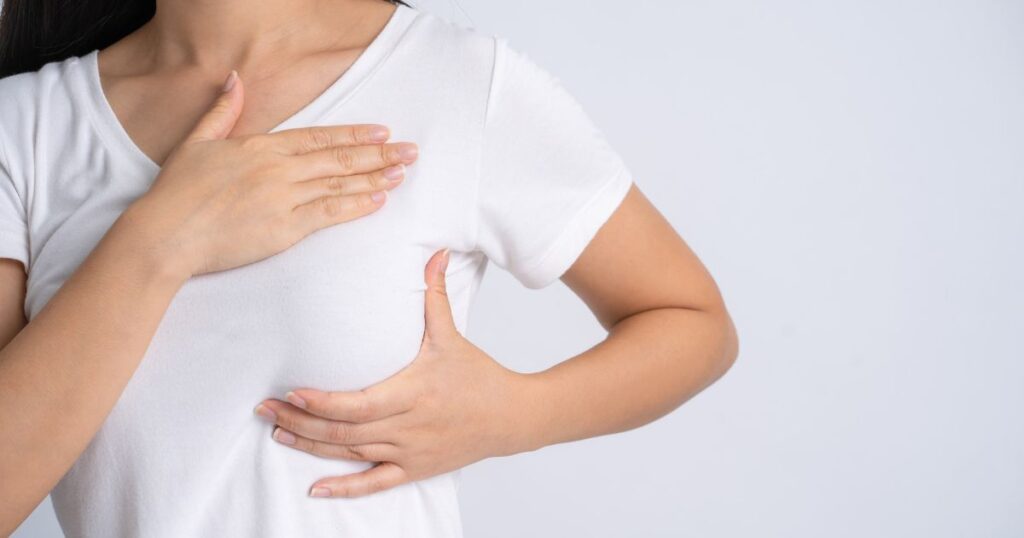
Post-surgery, it’s common to feel discomfort or pain around the scar area, which usually subsides as healing progresses.
- Sensations like itching or tightness can occur.
- Pain intensity usually diminishes over time.
- Proper care can alleviate discomfort.
- Consultation with the surgeon is crucial for persistent pain.
Breast reduction surgery provides many benefits, but scars are a natural outcome. Proper care can effectively manage these scars, ensuring pleasing and healthy results. It’s crucial to understand and accept the entire post-surgery experience, including the scarring.
Dr Tarek Bayazid, a top plastic surgeon in Dubai, is renowned for his facial rejuvenation and body contouring. He earned his MD from Belgrade University and trained with renowned European surgeons. Dr Tarek consistently delivers top results and is committed to exceptional aesthetic procedures and prioritising patient needs. He’s a member of ISAPS and is licensed in Serbia and Dubai. His affiliation with Dr Mendelson’s Melbourne Advanced Facial Anatomy Course further highlights his dedication to plastic surgery excellence.
Experience a transformation that impacts the quality of your life. Book a consultation with Dr. Tarek Bayazid today.

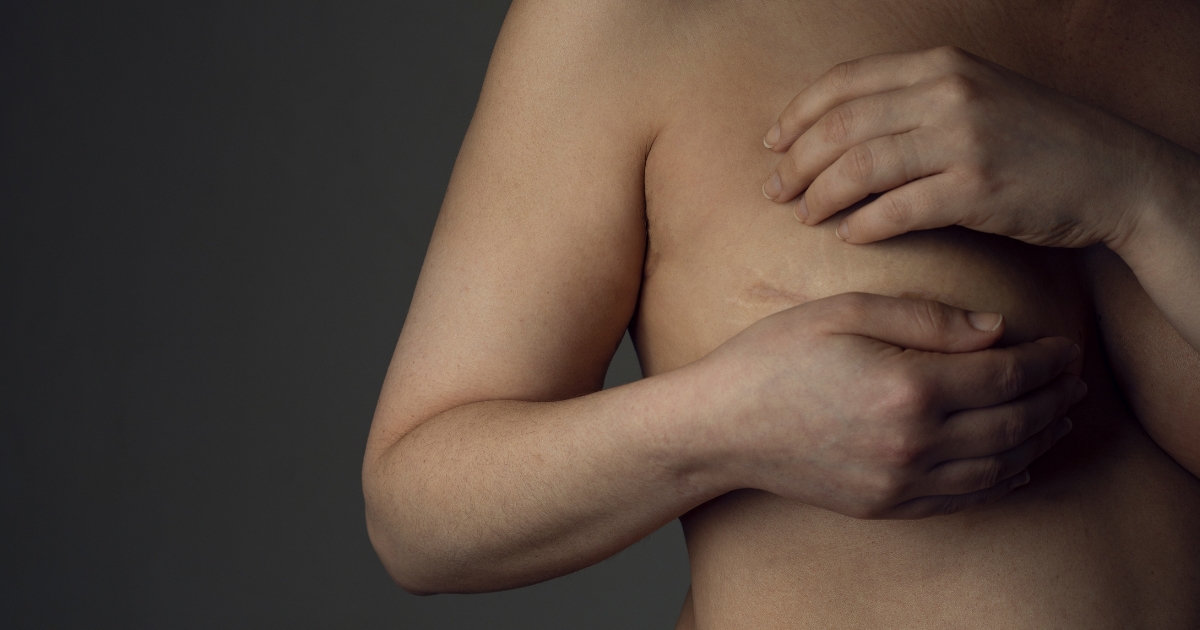




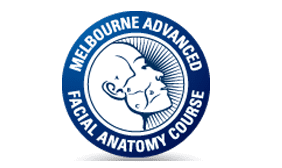

Related Posts